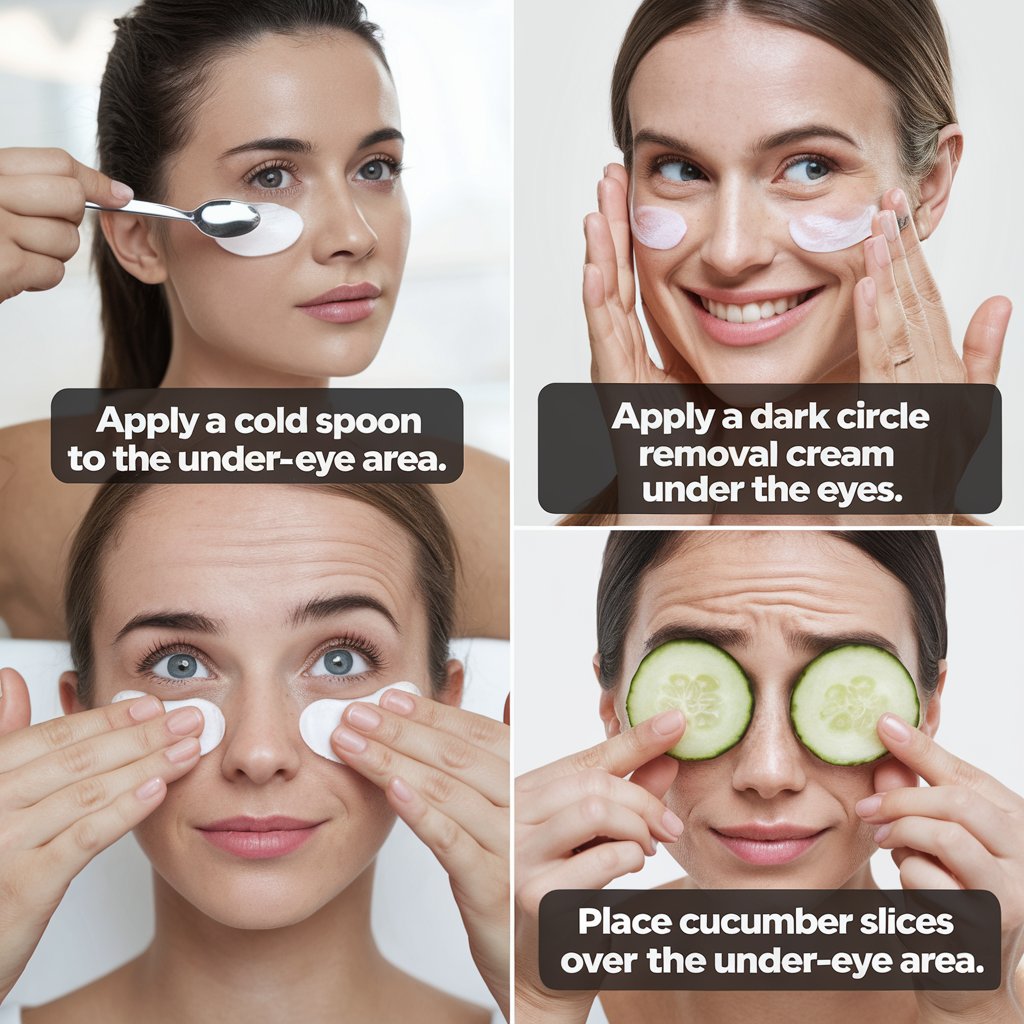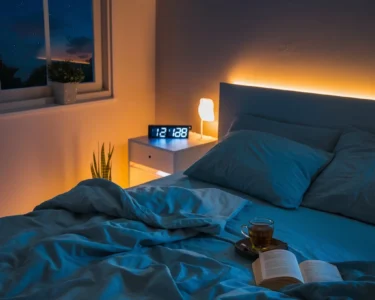Table of Contents
Identifying the Root Causes of Dark Circles
Dark circles under the eyes can be a frustrating and often persistent issue for many people. While they may seem like a cosmetic concern, understanding the underlying causes is crucial in finding an effective solution. In this article, we’ll explore the various factors that contribute to the development of dark circles and provide insights on how to address them.
Genetics and Skin Pigmentation
One of the primary causes of dark circles is simply genetics. Some individuals are predisposed to having naturally darker skin pigmentation around the eyes, which can create a shadowy appearance. This pigmentation difference is often hereditary and can be exacerbated by factors like sun exposure and aging.
Fatigue and Sleep Deprivation
Another common culprit behind dark circles is a lack of adequate sleep. When we’re tired, the blood vessels under the skin can dilate and become more visible, leading to a darkened appearance. Additionally, fatigue can cause the skin to appear dull and accentuate the shadows around the eyes.
Allergies and Sinus Issues
Allergies and sinus problems can also contribute to the development of dark circles. Inflammation and fluid buildup in the nasal and sinus areas can cause the blood vessels around the eyes to become more prominent, creating a darkened effect.
Aging and Volume Loss
As we age, the skin around the eyes can lose volume and elasticity, leading to a sunken or hollowed appearance. This can create shadows and make the blood vessels more visible, exacerbating the appearance of dark circles.
Lifestyle Factors
Certain lifestyle habits can also play a role in the formation of dark circles. Factors such as a poor diet, dehydration, and excessive alcohol consumption can all contribute to the problem by affecting the skin’s health and appearance.
Health Conditions
In some cases, dark circles may be a symptom of an underlying health condition. Thyroid disorders, anemia, or even kidney or liver problems can manifest in the form of dark circles under the eyes.
Addressing the Root Causes
To effectively address dark circles, it’s essential to identify and address the underlying causes. This may involve making lifestyle changes, such as improving sleep habits, managing allergies, or adjusting dietary habits. In some cases, seeking medical attention may be necessary to rule out any underlying health conditions.
Additionally, incorporating targeted skincare products and techniques can help minimize the appearance of dark circles. Applying a cold compress or using eye creams formulated with ingredients like vitamin C, caffeine, or retinol can help improve skin tone and reduce the visibility of blood vessels.
Dark circles can be a complex issue with multiple contributing factors. By understanding the root causes and taking appropriate steps to address them, individuals can work towards achieving a more refreshed and youthful appearance around the eyes.

Effective Home Remedies for Reducing Dark Circles
Identifying the Causes of Dark Circles
Dark circles under the eyes can be a common concern for many individuals. While they may be caused by a variety of factors, understanding the underlying reasons can help you address the issue more effectively. Factors such as lack of sleep, stress, aging, and genetics can all contribute to the appearance of dark circles. By identifying the root cause, you can then explore suitable home remedies to alleviate the problem.
Natural Remedies to Reduce Dark Circles
Cold Compresses
One of the simplest and most effective home remedies for dark circles is the use of cold compresses. The cold temperature helps to constrict blood vessels, reducing the appearance of discoloration. You can use a cold washcloth, chilled cucumber slices, or even ice cubes wrapped in a soft cloth and gently apply them to the affected area for 10-15 minutes, a few times a day.
Cucumber Slices
Cucumbers are known for their cooling and soothing properties, making them a popular choice for reducing dark circles. The high water content and antioxidants in cucumbers can help to hydrate the delicate skin around the eyes and reduce inflammation. Simply slice a cucumber and place the slices directly on your eyes, leaving them on for 15-20 minutes.
Aloe Vera Gel
Aloe vera is a natural moisturizer and has anti-inflammatory properties that can help to soothe and brighten the skin around the eyes. Apply a small amount of fresh aloe vera gel to the dark circles and gently massage it in. Leave it on for 15-20 minutes before rinsing it off with cool water.
Tea Bags
The caffeine and antioxidants in tea can help to constrict blood vessels and reduce the appearance of dark circles. Simply steep a couple of black or green tea bags in hot water, allow them to cool, and then place them on your closed eyes for 10-15 minutes.
Potato Slices
Potatoes contain natural bleaching properties that can help to lighten the skin and reduce the appearance of dark circles. Slice a raw potato and place the slices directly on your eyes, leaving them on for 15-20 minutes.
Lifestyle Changes to Prevent Dark Circles
In addition to using home remedies, making some lifestyle changes can also help to prevent and reduce dark circles over time.
Get Enough Sleep
Adequate sleep is essential for overall skin health, and it can also help to minimize the appearance of dark circles. Aim for 7-9 hours of sleep each night to allow your body to rest and rejuvenate.
Manage Stress
Stress can contribute to the development of dark circles by causing blood vessels to dilate and increasing inflammation. Practice stress-reducing techniques such as meditation, yoga, or deep breathing exercises to help alleviate the problem.
Protect Your Eyes
Exposure to UV rays can contribute to the development of dark circles. Wear sunglasses when you’re outside to protect the delicate skin around your eyes from sun damage.
Drink Plenty of Water
Staying hydrated can help to keep the skin around your eyes looking plump and healthy, reducing the appearance of dark circles. Aim to drink at least 8 glasses of water per day.
By incorporating these natural home remedies and lifestyle changes, you can effectively address the issue of dark circles and achieve brighter, more radiant-looking eyes.

Lifestyle Changes to Prevent Dark Circles
Get to the Root of the Problem
Dark circles under the eyes can be caused by a variety of factors, from genetics and aging to lifestyle habits and environmental factors. To effectively prevent and minimize the appearance of dark circles, it’s important to address the underlying causes. Begin by examining your daily routine and identifying potential contributors to the problem.
Improve Sleep Quality
Lack of quality sleep can lead to fluid buildup and discoloration around the eyes. Aim for 7-9 hours of uninterrupted sleep each night, and establish a consistent sleep schedule to regulate your body’s natural rhythms. Ensure your sleeping environment is dark, cool, and free from distractions.
Manage Stress Levels
Chronic stress can take a toll on your skin, leading to inflammation and capillary constriction that exacerbate dark circles. Incorporate stress-reducing activities into your daily routine, such as meditation, yoga, or deep breathing exercises. Prioritize self-care and find healthy outlets to manage anxiety and tension.
Improve Hydration
Dehydration can cause the skin around the eyes to appear dull and sunken, emphasizing the appearance of dark circles. Drink plenty of water throughout the day and consider incorporating hydrating foods like cucumbers, watermelon, and leafy greens into your diet.
Optimize Your Skincare Routine
Your skincare regimen can play a significant role in preventing and reducing the appearance of dark circles. Incorporate targeted treatments and techniques to address the specific needs of the delicate eye area.
Use Eye Creams and Serums
Look for eye creams and serums formulated with ingredients like caffeine, vitamin C, and retinol, which can help brighten the skin, improve circulation, and reduce puffiness. Apply these products gently around the orbital bone, avoiding the direct eye area.
Prioritize Sun Protection
Exposure to UV rays can exacerbate the appearance of dark circles by causing pigmentation and inflammation. Wear a broad-spectrum sunscreen with an SPF of at least 30 every day, and consider wearing a wide-brimmed hat or sunglasses when spending time outdoors.
Incorporate Gentle Exfoliation
Gently exfoliating the skin around the eyes can help slough off dead skin cells and improve circulation, leading to a more even and radiant appearance. Use a soft washcloth or a mild, fragrance-free exfoliating scrub a few times per week, being careful not to tug or pull the delicate skin.
Lifestyle Adjustments for Brighter Eyes
In addition to addressing the underlying causes and optimizing your skincare routine, there are several lifestyle changes you can make to help prevent and reduce the appearance of dark circles.
Improve Diet and Nutrition
Certain nutrients, such as vitamin K, iron, and omega-3 fatty acids, can help support healthy skin and reduce inflammation around the eyes. Incorporate foods like leafy greens, fatty fish, and citrus fruits into your diet, or consider taking supplements if needed.
Reduce Alcohol and Caffeine Intake
Excessive consumption of alcohol and caffeine can lead to dehydration and exacerbate the appearance of dark circles. Limit your intake of these substances and prioritize staying hydrated to maintain healthy, vibrant skin.
Minimize Eye Strain
Prolonged use of digital screens, reading, or other activities that strain the eyes can contribute to the formation of dark circles. Take regular breaks, adjust screen brightness and distance, and consider using computer glasses or blue light-blocking eyewear to reduce eye strain.
By addressing the root causes, optimizing your skincare routine, and making lifestyle adjustments, you can take proactive steps to prevent and minimize the appearance of dark circles, helping you achieve a more refreshed and youthful look.

Cosmetic Treatments and Procedures for Dark Circles
Dark circles under the eyes can be a frustrating and seemingly persistent issue for many people. Fortunately, there are a variety of cosmetic treatments and procedures available that can help reduce the appearance of dark circles and restore a more youthful, refreshed look.
Topical Creams and Serums
One of the most accessible options for addressing dark circles is the use of specialized topical creams and serums. These products often contain ingredients like caffeine, vitamin C, retinol, and hyaluronic acid, which can help improve blood circulation, reduce pigmentation, and hydrate the delicate skin around the eyes. Applying these products consistently, as directed, can help minimize the appearance of dark circles over time.
Eye Masks and Patches
Another popular option for treating dark circles is the use of eye masks or patches. These products are designed to be applied directly to the under-eye area, delivering targeted ingredients like green tea, niacinamide, or collagen to help brighten, depuff, and improve the overall appearance of the skin. Eye masks and patches can be particularly effective when used as part of a regular skincare routine or as a quick, on-the-go solution.
Chemical Peels
For those seeking more intensive treatment, chemical peels can be an effective option for addressing dark circles. These procedures involve the application of a chemical solution, such as glycolic acid or lactic acid, which helps to exfoliate the skin and reduce the appearance of discoloration. Chemical peels can be performed by a licensed dermatologist or esthetician, and the results can be quite dramatic, though some downtime may be required for the skin to fully heal.
Microneedling
Microneedling is another cosmetic procedure that can be beneficial for reducing the appearance of dark circles. This treatment involves the use of tiny, sterile needles to create controlled micro-injuries in the skin, which can stimulate the body’s natural healing process and promote the production of collagen and elastin. Over time, this can help to improve the texture and brightness of the skin around the eyes, resulting in a more youthful, refreshed appearance.
Fillers and Injections
In some cases, the appearance of dark circles may be caused by volume loss or structural changes in the under-eye area. In these instances, injectable fillers or neuromodulators (such as Botox) can be used to restore volume, smooth fine lines and wrinkles, and create a more youthful, rested look. These treatments should only be performed by a licensed and experienced medical professional, as improper injection technique can lead to undesirable results.
It’s important to note that the effectiveness of these treatments can vary depending on the individual’s unique skin type, underlying causes of dark circles, and overall health. It’s always a good idea to consult with a dermatologist or esthetic professional to determine the best course of action for addressing dark circles and achieving the desired results.
In addition to these cosmetic treatments, maintaining a healthy lifestyle, getting enough sleep, and protecting the delicate skin around the eyes from sun exposure can also play a role in minimizing the appearance of dark circles over time. By combining a multi-faceted approach, individuals can work towards achieving a more radiant, youthful-looking complexion.
Understanding the Role of Genetics in Dark Circles
Unraveling the Genetic Factors Behind Dark Circles
Dark circles under the eyes can be a source of frustration for many people, affecting their appearance and self-confidence. While there are several factors that can contribute to the development of dark circles, such as lack of sleep, allergies, and aging, understanding the role of genetics in this common skin concern is crucial.
Genetic Predisposition to Dark Circles
Research has shown that genetics play a significant role in the propensity for developing dark circles. Certain genetic variations can influence the production and distribution of melanin, the pigment responsible for skin color. Individuals with a higher genetic predisposition to melanin production may be more likely to experience darkening around the eye area.
Thin, Delicate Skin Structure
Another genetic factor that can contribute to dark circles is the thickness and structure of the skin in the eye area. Some people are genetically predisposed to having thinner, more delicate skin around the eyes. This can make the underlying blood vessels and tissues more visible, creating a darker appearance.
Bone Structure and Eye Positioning
The positioning and structure of the eyes and the surrounding bone can also be influenced by genetics. Individuals with a more pronounced bony orbital ridge or a deeper-set eye position may be more prone to developing shadows and darkness under the eyes, even in the absence of other contributing factors.
Vascular Makeup and Circulation
Genetics can also play a role in the vascular makeup and blood circulation patterns around the eyes. Some people may have a predisposition to increased blood flow or a more pronounced vascular network in the under-eye area, leading to a visible bluish or purplish hue that can create the appearance of dark circles.
Lifestyle and Environmental Factors
While genetics are a significant factor in the development of dark circles, it’s important to note that lifestyle and environmental factors can also contribute to this skin concern. Factors such as stress, lack of sleep, sun exposure, and allergies can all exacerbate the appearance of dark circles, even in individuals with a genetic predisposition.
Addressing Dark Circles through Targeted Treatments
Understanding the role of genetics in dark circles can help individuals develop a more personalized approach to addressing this skin concern. Consulting with a dermatologist or skincare professional can help identify the underlying causes and provide tailored solutions, such as specialized skincare products, cosmetic procedures, or lifestyle modifications, to help minimize the appearance of dark circles.
The genetic factors that contribute to the development of dark circles under the eyes are multifaceted and complex. By understanding the role of genetics in this skin concern, individuals can take a more informed and proactive approach to managing and addressing dark circles, ultimately enhancing their overall appearance and self-confidence.
Conclusion
Addressing the root causes of dark circles, whether they stem from lifestyle factors, genetics, or medical conditions, is crucial for finding lasting solutions. By incorporating effective home remedies, making lifestyle adjustments, and exploring cosmetic treatments when necessary, individuals can take proactive steps to minimize the appearance of dark circles and achieve a more refreshed, youthful look. Remember, a holistic approach that considers the unique circumstances of each person is often the key to successfully reducing and preventing these stubborn under-eye concerns. With the right information and a commitment to self-care, individuals can reclaim their confidence and enjoy brighter, more vibrant-looking eyes.






